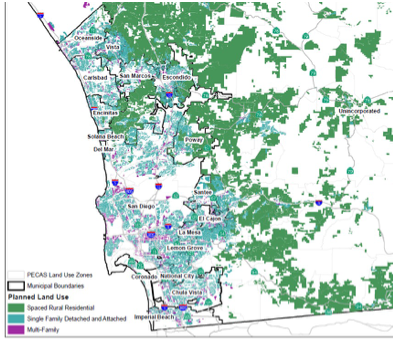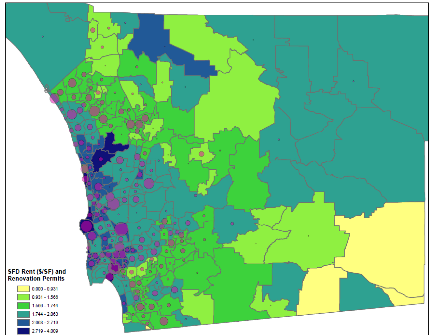San Diego PECAS Model
SANDAG wished to improve their land use modelling capability, and wanted to develop spatial economic modelling capabilities for better analysis of policies. HBA Specto was commissioned to work with SANDAG staff to install a PECAS model, and then work to improve it in successive iterations by applying SANDAG data.
An initial model was developed with a simple design, and installed and run on SANDAG computers. A more sophisticated model was designed with 45 spatial activities, 43 non-labor interactions, 7 labor types, 35 space types and 229 zones. The second iteration model was populated with data from the IMPLAN social accounting matrix, adjusted to match SANDAG employment inventory and Census data including cross distributions of employment occupation and housing type from the Public Use Microsample data. A Microsoft SQL Server database was developed for the model inputs, and scripts were written to process the original data to the representation and format required by the model.
The second version of the spatial economic model is being calibrated to properly represent base year conditions as well as elasticities in location choice, labor markets and space consumption by households and industries.
A microsimulation model of developer behaviour was developed for the second version, which processes 799,000 parcels and simulates developer behaviour on each parcel. The simulation considers the demand for space in the zone from the spatial economic model, as well as individual parcel characteristics such as zoning regulations, general plan, parcel slope, serviceability (water and sewer), distance to the beach, distance to major transit and proximity to freeway ramps and major roads.
This simulation is being calibrated to historical data from development permits, so that it can properly represent the tendency of developers to build or renovate the different types of space that are represented in the model.


